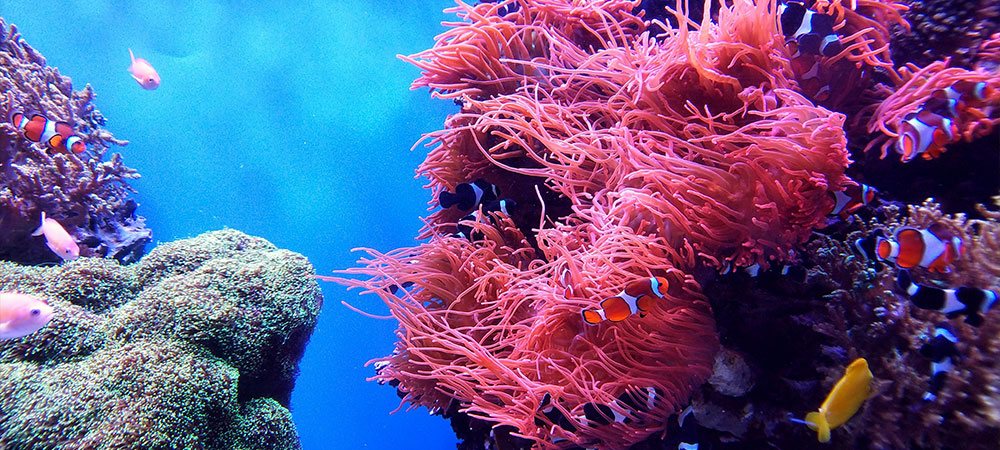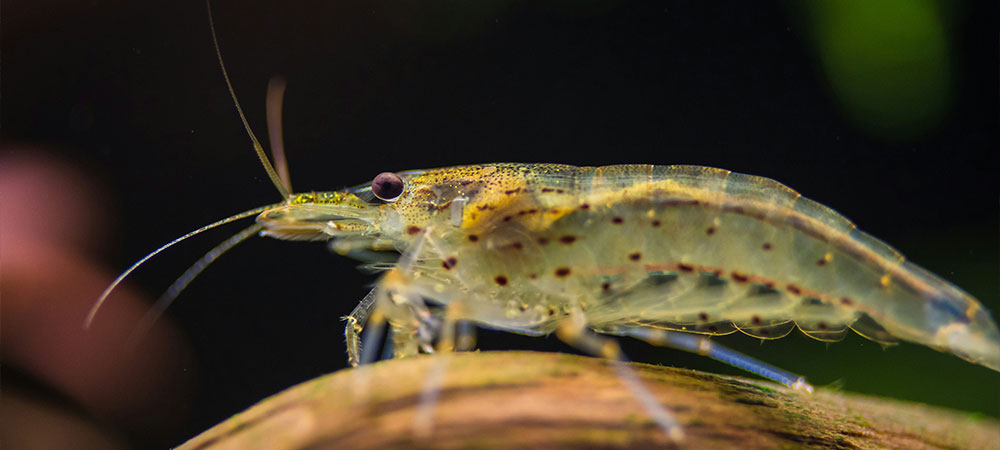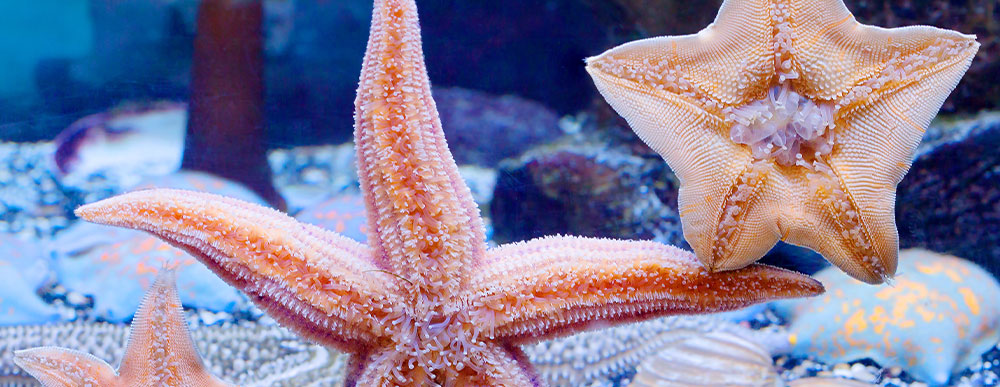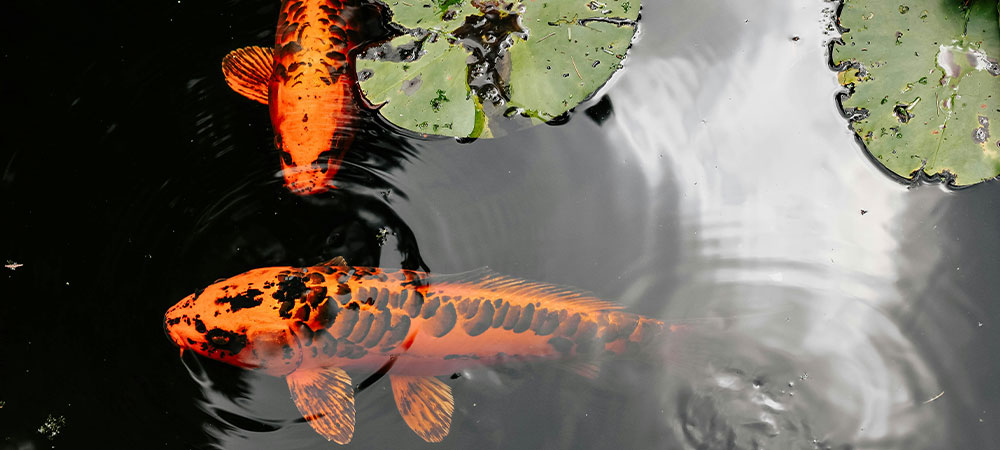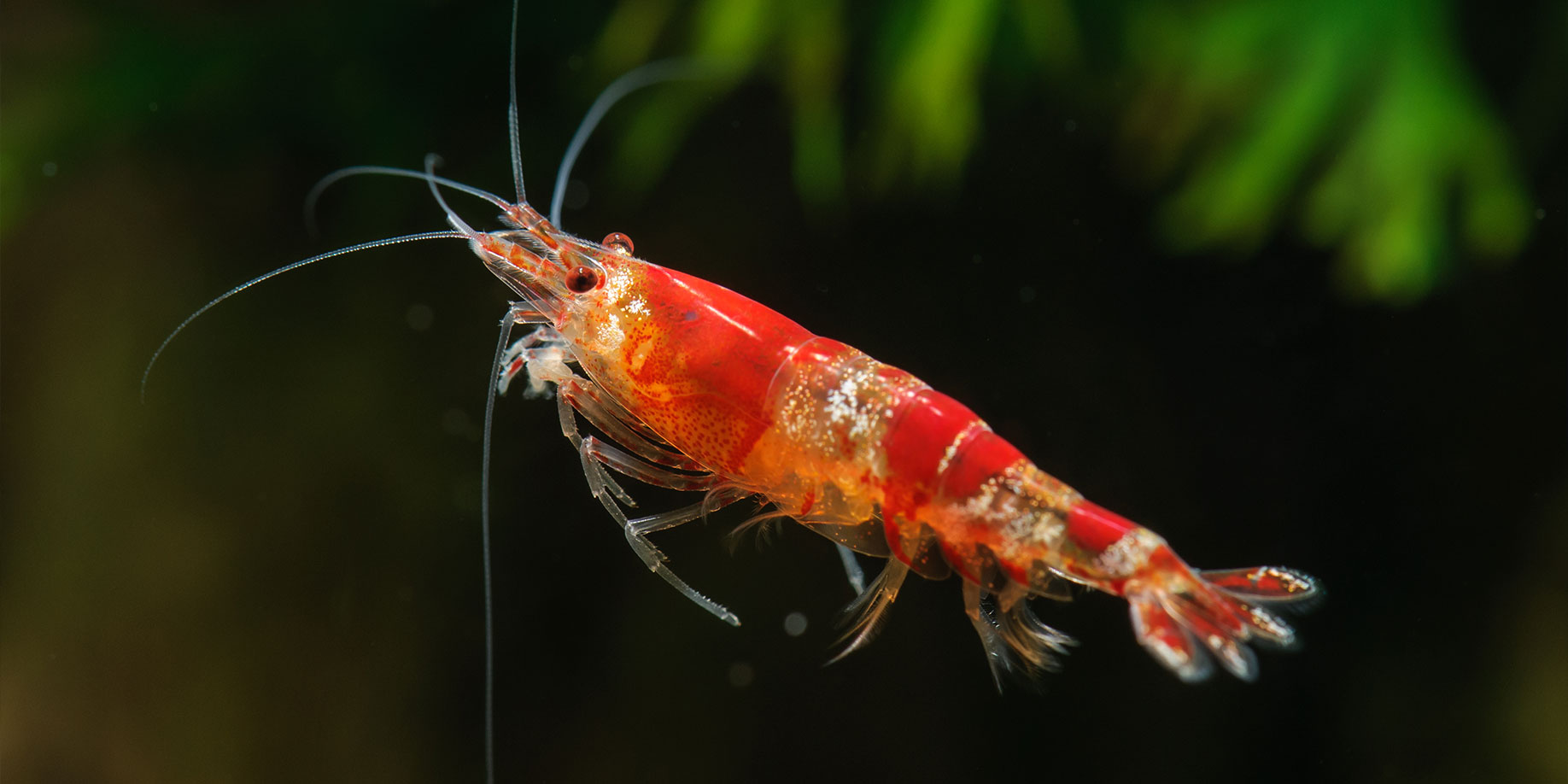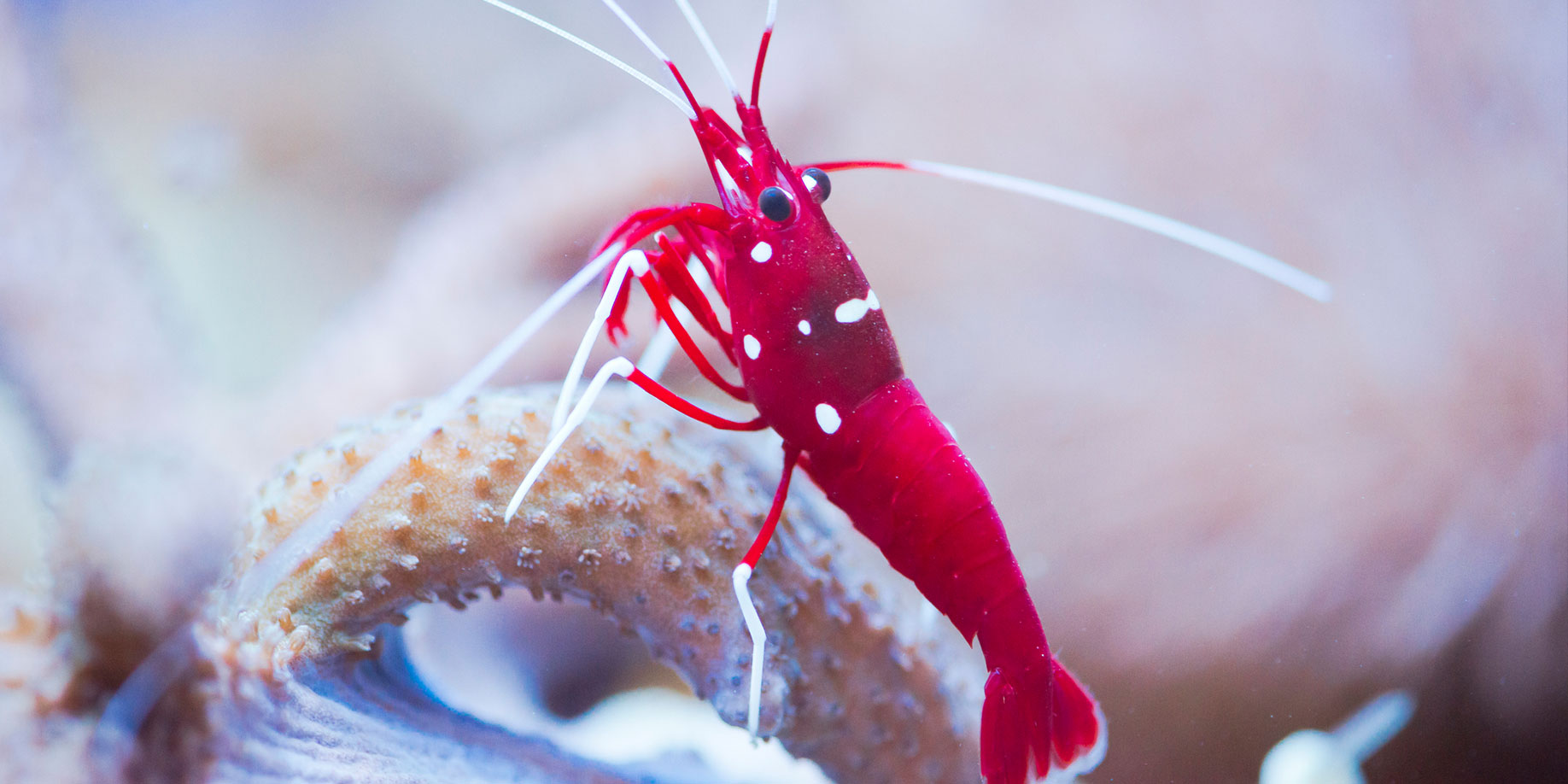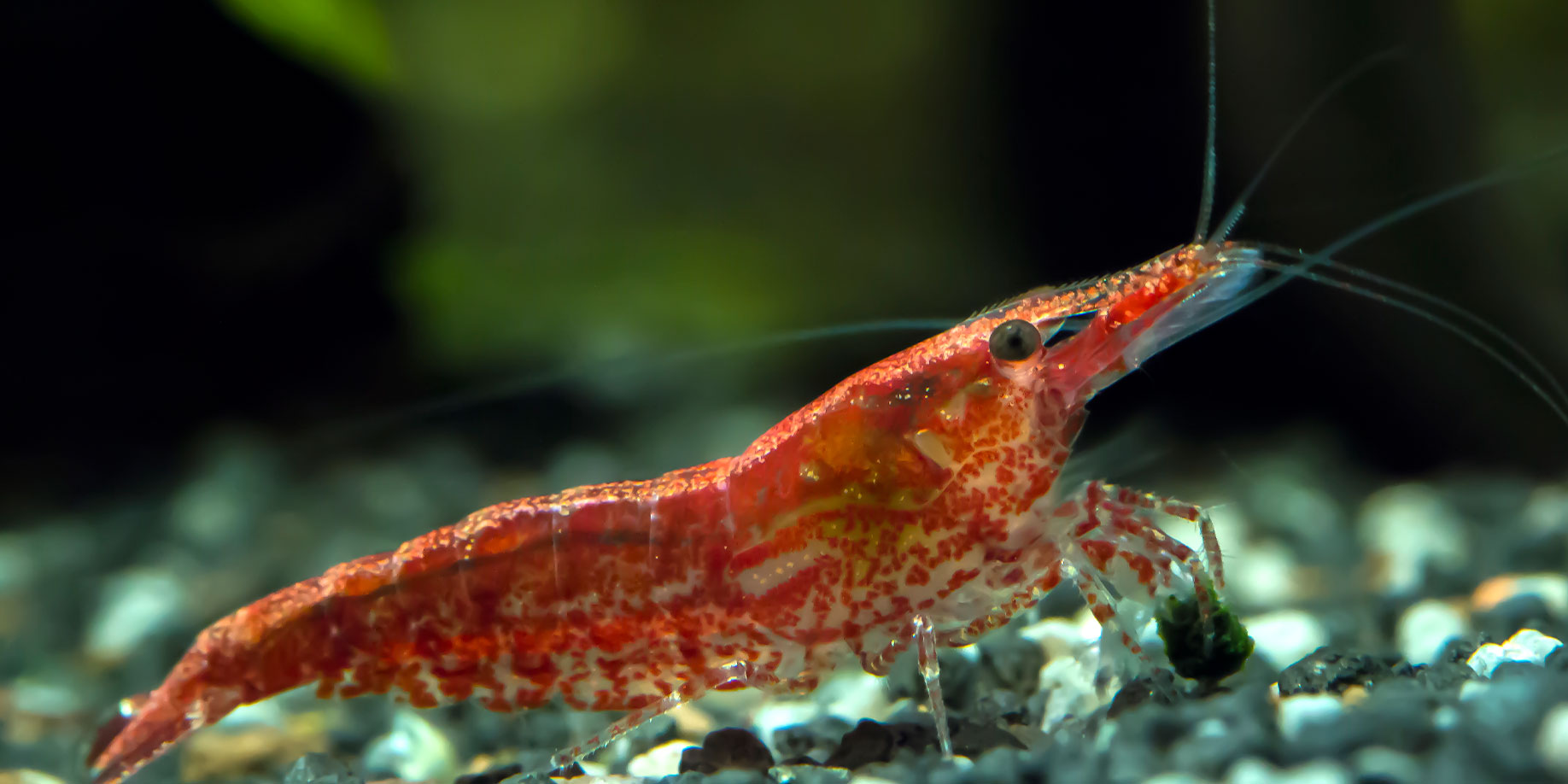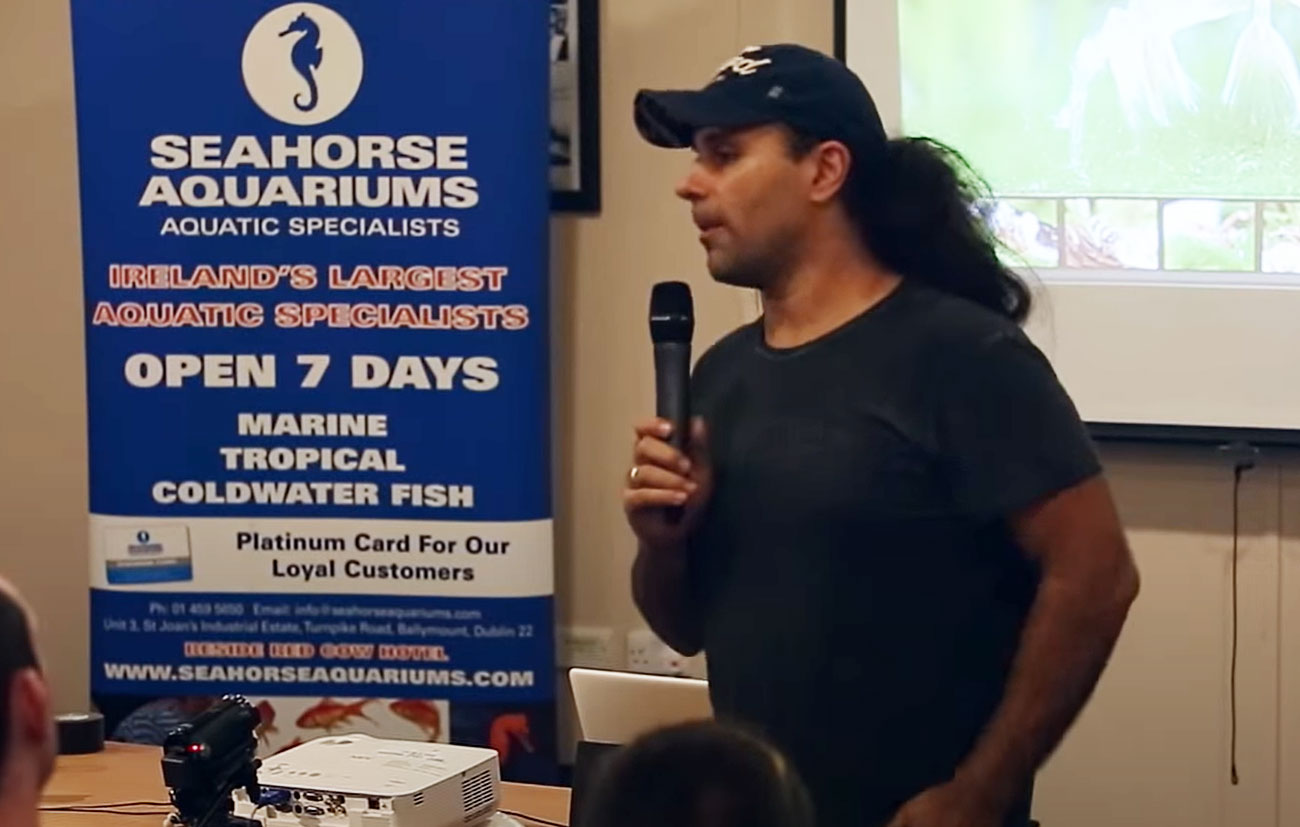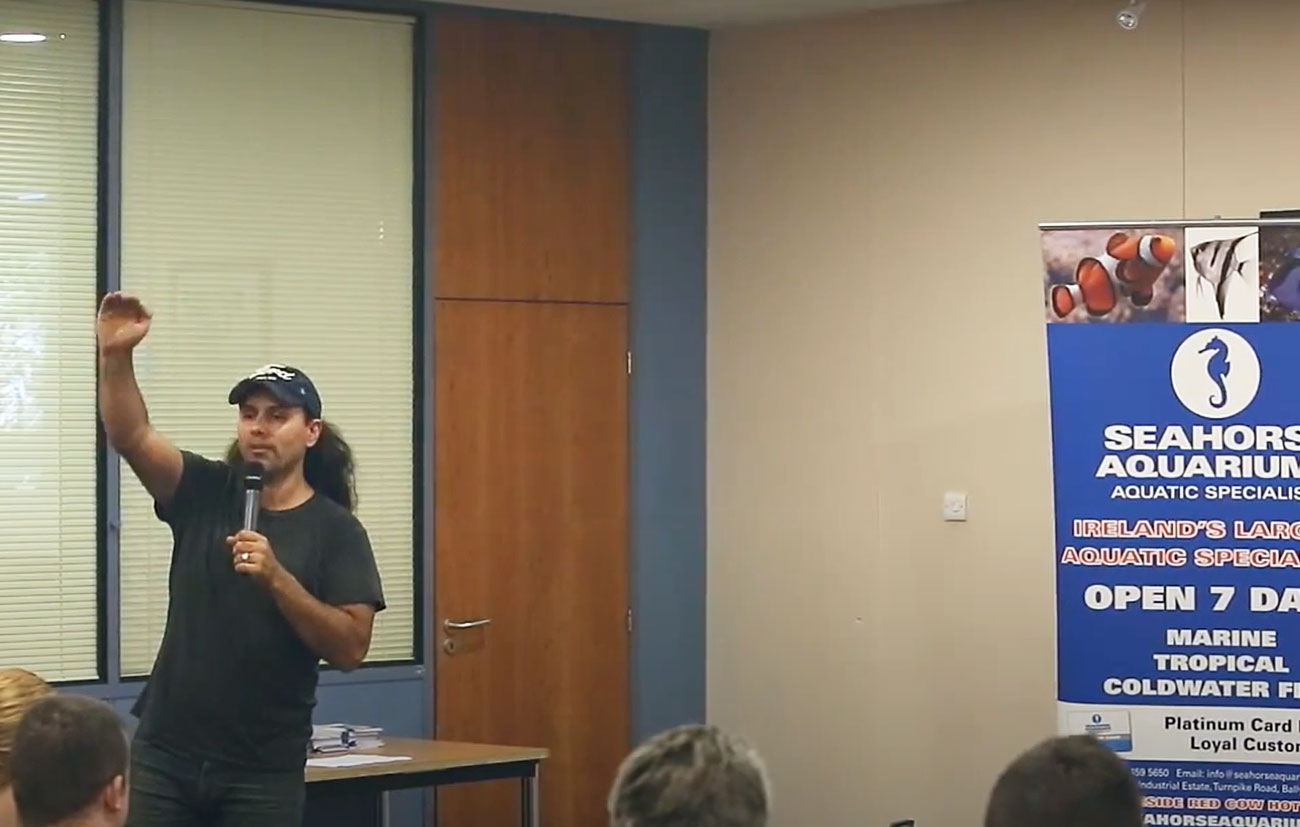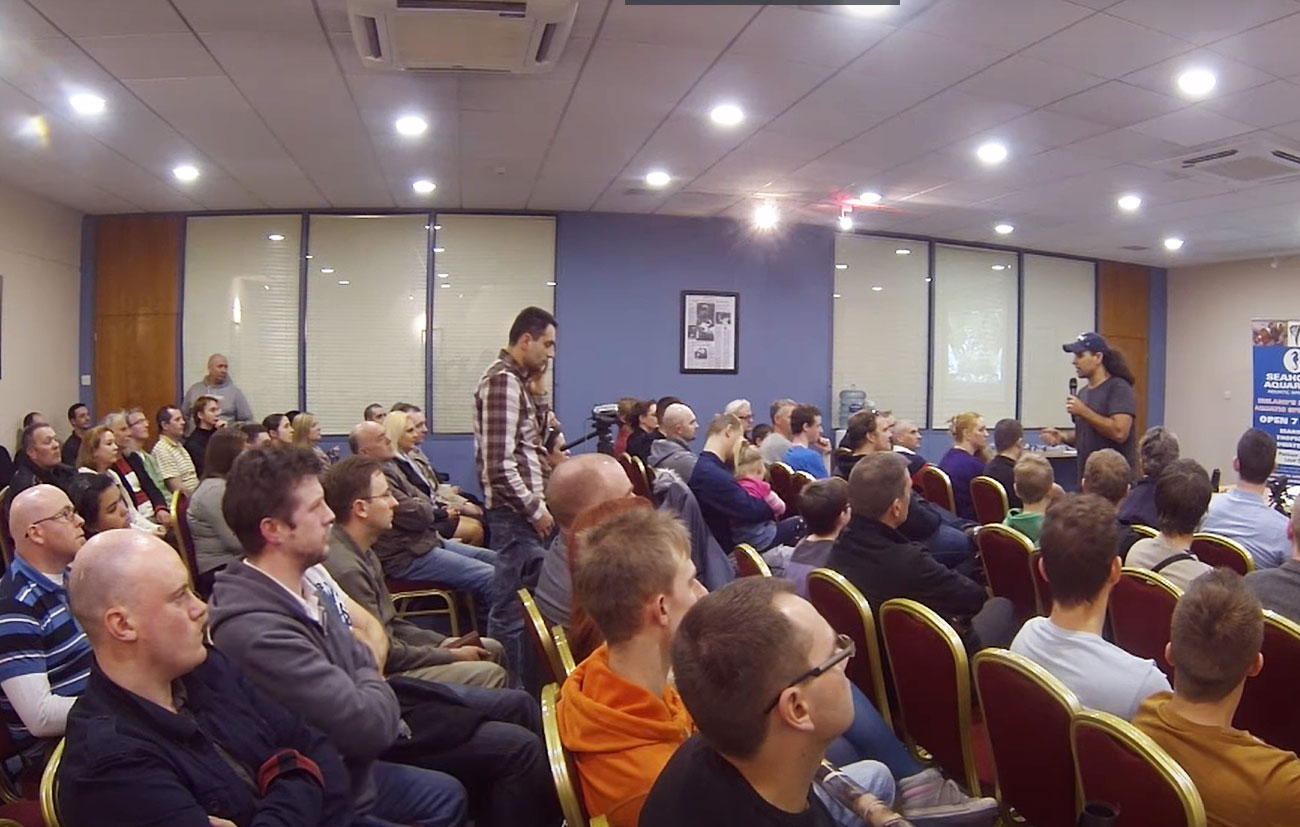Shrimp Event
Chris Lukhaup's rare shrimps
Discover the amazing colourful world of Shrimps with Chris Lukhaup and Seahorse Aquariums.
Chris Lukhaup Special Guest
This new event with Seahorse Aquariums is a great opportunity to meet Chris who is the worlds leading dwarf shrimp and crayfish specialist. The first freshwater shrimps appeared in tanks around the world some years ago, triggering a new and dynamic trend. Freshwater invertebrates like crayfish, snails, crabs and, first and foremost, shrimp have since simply stolen fishkeepers’ hearts.
Chris will take us through what is required to setup a shrimp nano tank and explain the maintenance and care needed for these aquatic animals. Also to help understand Water parameters, Breeding, Colour morphs, required filtration & Problems and solutions.
There is a huge variety of dwarf shrimp including red cherry, King kong, Shadow panda, black tiger and red ruby to name a few. Prices for shrimp vary from €2 to up to €5,000 per shrimp.
There will be at the event special shrimp starter packs which will have everything that you need to get started including shrimps. We will be offering at the event some special prizes of exclusive and rare shrimps to people who attend the event.
Come and find out about the nano world that most of us fish keepers may over look. Nano Shrimp tanks would make an ideal children's first venture into the underwater world.
There will be gifts for attendees of the event.
Join us for an informative evening in a friendly environment, and benefit from some never to be repeated offers on Dwarf shrimps and Crayfish.
Book early as numbers are limited!
For more information on Chris, has ventures around the world, Please look a the links on this page. We also have some video footage of different expeditions that Chris has done over the years.
What got you into shrimps etc. in the first place - and how long ago? Did you keep fish before that?
As so often, everything started in my childhood, when I was about five or six years old. My brother gave me some guppies I put into a tank where I used to spend hours just sitting and watching. That was back in the 70s, and there was not much aquarium technology and decoration around.
Several years later, when I was a teenager, I saw yellow Labidochromis caerulus in a local fish store and fell in love. I then put up a 720 l tank I kept Malawi cichilids in. I spent many nights studying the literature in order to find out more about them, and pretty soon breeding started to be successful. However, the hobby gained even more momentum when I saw some electric blue crayfish in a fish store where I used to work as a side job during my studies in philosophy. I was totally fascinated by these curious animals and asked my colleagues where they came from and about their behaviour, but no one really knew anything about this species. To my very big surprise I found only male crayfish among those offered in the trade. I regularly examined the new shipments from the wholesalers for females, and after a long and intensive search I indeed was lucky. This might have been a mistake by the wholesaler, as I had heard over and over again that they only shipped males in order to prevent hobbyists from breeding them and thus to keep the price stable. Other said, however, that the reason for this phenomenon was that males grow faster.
By now I am led to believe that price policy must have played the bigger role; after breeding thousands of crayfish I couldn't really detect that big a growth difference between males and females.
What's the most unusual/difficult species you have bred or kept and why?
As I found my way to inverts directly after keeping Malawi cichlids, I didn't really have time for other fish species.
I'd say my interest changed rather early from breeding different crayfish species to systematics and taxonomy, and that I'm rather interested in new freshwater invertebrate species and their distribution.
What are you into at the moment?
At the moment I have many different things to work on.
Of course, I go on several expeditions a year to search for new species or to find some less well-known ones, moreover I write and photograph for 12 aquaristic magazines in all the world, I hold lectures in Germany and abroad, I'm a research assistant for several museums and universities and I also do consulting work for some large aquaristic companies like Dennerle or Tetra. Together with Dennerle, I developed the Nano concept, which has been a great success.
In addition, I'm currently working on a fish atlas for Chile, "The Freshwater Fauna of Chile", and I'm also involved in several projects of the US Department of Fish and Game, I'll be doing several posters and books on their freshwater fauna. A new project is also going to be launched this year, dealing with the freshwater fauna of Sulawesi, whose newly discovered shrimp have caused quite a stir recently.
I have also been able to publish a few books about inverts and nano aquaristics, this year alone four, and at the end of 2011, there will be another four.
There are also three crayfish species newly described by me, and I'm currently working on describing another two.
What's your greatest achievement/proudest moment?
I have become the father of a daughter quite recently, and I have to say the moment of her birth is absolutely one of them. In addition to that, I have to mention the successes me and my bands "Atrocity" and "Leaves Eyes" were able to celebrate on the stages of this world. We did two world tours and innumerable shows on nearly all continents. So I can rightfully say I've seen the Rock'n Roll side of the world as well as the aquaristic side, on my over 40 expeditions. There are far too many moments in my life that were truly exciting and interesting to name them all.
When you're not shrimpkeeping, what are you doing?
Actually, I don't really have a lot of time for other things. I have given up making music as I wanted to fully concentrate on aquaristics. Of course, life as a Rock'n Roller is turbulent and exciting, but I'd like to put all my energy and strength into my hobby, aquaristics, and into exploring nature.
What's the biggest challenge you've had (even if it didn't work out)?
Another project I have launched is the Aquaristik Task Force.
Together with almost all aquaristic companies and the German Minstry of Education I was working on a concept to familiarize kids with aquaristics and thus with nature. In November 2009 I invited all the marketing department heads to Stuttgart in order to present them the draft of "Kids go Nature". My aim was to put up a tank in all the schools in Germany and to offer teachers and children a project to explore nature in this aquarium. A side effect of this is of course winning over these kids as future tankkeepers. This is a huge challenge and the project per se is an immense task. At the moment I am working on a huge project with Oliver Knott. We are Aquascaping 50 Aquariums for a book. I am sure that Aquascaping is a new trend we should put an eye on. I for sure will support this !
What's your worst aquatic-related experience?
I had a very traumatic experience in my childhood when my guppies were cooked by mistake. The heater hadn't stopped, and in the morning, when I wanted to look after them, all the fish were dead, unfortunately.
Have you ever found yourself in a difficult/dangerous position in pursuit of your interests?
Thinking of dangerous situations I have to say these were mostly in connection with humans rather than with animals. I accidentally treaded on snakes, and I also swam with alligators by an oversight, but nothing bad has happened to me so far. One dangerous situation arose when I was collecting crayfish in the mountains of Mexico, and suddenly some armed Mexicans on horses first called me a gringo and then wanted to have my camera equipment. I explained that I'm not Santa, which made them really furious, and thus I had to take to my heels and run. During this flight my rental car was damaged and unfortunately one of the houses blocking my way, too.
Who is your biggest fish/shrimpkeeping hero and why?
Up to now I haven't really found one. However, there are scientists I deeply admire, like Prof. Holthuis, who worked at the Museum in Leyden/The Netherlands and was curator of the Crustacean Dept. there, or Horton H. Hobbs, who was with the Smithsonian, USA ,and who described innumerable crayfish species. These people have made an incredible contribution to our knowledge of our beloved crustas. Both were also great human role models.
What's your biggest aquatic-related dream?
I think I've been able to fulfill most of these dreams. Be it collecting crayfish in Missouri or Australia, or fish in the Chilean Andes or in the Desert of Atacama, observing fiddler crabs in Panama or shrimp in the clear waters of Hong Kong.
Papua New Guinea and Sulawesi I did during the last 12 month so infact I have to look for new challanges now.
Chris’ photo obsession
Q. What’s your particular photo obsession and where does it come from?
I believe that my path to photography was not the usual one. It all started when I wanted to potograph my crayfish from my aquarium and to write articles about very little known species. I quickly realized that out of the over 600 species that are out there, there are only few or very bad photos. Generally speaking there are only a few hobbyist photographers that shot beautiful photos. That was one of the reasons I took up photography. Aquaristik is a beautiful hobby and I want to show it to everyone. I would describe myself as an aquariums and nature photographer, the focus, however, is on the aquarium hobby. I could never be a fashion, cars or product photographer. Neither people models interest me.
Q. What do you try and capture in your images? What are you trying to show?
Years ago, when I started, the most important thing to me was to shoot the animal as a whole. Meanwhile, however, other things turned out to be more important. I am particularly interested in the macro photography of insects and aquatic life. In rivers, lakes or the sea, there are a variety of animals that have received little attention or were never seen, let alone close-ups that show their true beauty. I take as a good all days example assume the fly.
That's really nothing extraordinary because we see something almost every day. However, only when we look at it through the macro lens are we aware of the many common things that look very fascinating if you look at them just the right way. Of course, there is the example of a fly so that 50% of the people see it as a little monster, while 50% see it as a miracle of nature. Anyway, they are all fascinated.
Q. How do you choose your subjects? Or do they choose you?
I do choose my subjects. I enjoy the most shooting photos in the forests of Indonisia, Papua or South America where I usually have the luxury of having too many subjects to choose from. They are actually accidental acquaintances. A beetle on the branch of a tree, a dragonfly on a stone, a small flower on a bush - all subjects in just a few square metres of nature.
Q. What kit do you use to shoot such small subjects?
Well basically I have nothing special but a Camera. A Canon D7 and a Macro 105 from Sigma. Important, however, are a tripod and my cable trigger. From time to time I also use spacers of Canon. What gives me much joy is preparing my underwater housing from BS Kinetiks. So I shoot photos and films underwater landscapes with my EOS 5 D Mark II
Q. Do you shoot on location or in the studio? If both, what determines location?
Both. I prefer to shoot insects in the forest or meadows. But mostly in nature. The very thing of going out in the nature is a lot of fun. BY photographing one can observe his subjects and can learn a lot about it. Aquaristic shooting is done at home. I would not say that I have a studio at home but I use a softbox and a Pro Photo flash. I also have this flash with me when I go on an expedition.
Q. And how do you light your shots?
For me one of the most important things in nature and Aquaristic shooting is light. I like it when the animals are well lit and you can see each and every small detail. When I photograph in nature I pick only the cloudy days. Since the light is balanced beautifullyn and I do not have to do much. It is when it is cloudy that most insects show up in the foreground and sit quite still or don't even move. So i can do high exposure and get sharp images. I know many photographers who are up very early in the morning to photograph in nature. That doesn't really suit me. I'm a musician and never go to sleep early.
In the aquarium, I use a Pro Photo flash and a softbox hanging at an angle of 45 degrees above the aquarium.
Q. What techniques are involved (i.e. how do you get so close, shooting through glass etc)
As compared to shooting in the nature for Aquaristic shooting I use a flash and no short time exposure. The glass should not be too thick. Above 8 millimeters results in a blurry picture. My Photo Aquarium is only 4 mm thick, which is very important if you want to have sharp images. Of course, one should always shoot the subject at an angle of 90 degrees as anything else would distort the image too much. I hardly know any good pictures which are shot in a public aquarium because the glass panes are much too thick there. And also because they often have no 90 degree angle but slightl photographed from the side or from below.
Q. Other than the right kit, I imagine you need a LOT of patience – what lengths do you go to in order to get the right shot?
That's right. You do need a little patience or else you cannot get back with a good picture. I am actually very impatient but experience has taught me that a good image always needs the right moment. Sometimes I sit for half a day in front of the aquarium to get the right shot. Above all, one must also know the animals before they attempt to photograph it. Especially in aquatics. I photograph a subject only after I observe the fish or shrimp a few times and see what kind of temper they have and what may or may not work for the shooting. From time to time I talk to them and, amazingly, often they do understand me.
Q. How did you learn the ropes? Did you get perfect shots straight away?
I think when you photograph over the years the same things you can also learn how to be the best at it. Of course one tries out a lot and looks at other e photographars shots. Today I'm doing a lot more photos with only one lens because I have become even more critical towards myself. I'm rarely truly satisfied with a certain photo because I always think it's always possible to get a photo that is little sharper or at a better angle. Sometimes I manage to get a good photo from a single shot, especially in the case of aquarium shooting.
Q. Any famous mistakes/incidents over the years?
Impatience.
Q. Describe some of your most exciting jobs and what they involved?
Even though I often photograph aquariums I've always wanted to shoot animals in their own habitats. I have made more than 40 expeditions and tours in nearly 70 countries around the world. Fortunately, I have been on regular tours with my two bands, Atrocity and Leaves Eyes, in Europe, the USA, South America and Australia, and after a tour I could usually stay on site to photograph a few more days at hardly any cost. Often I jumped off the stage into the car and drove to the nearest river and took photos. Most exciting are the expeditions to Papua in areas where hardly anyone has been before, and where many of the animals photographed are not yet known to the scientists. In addition, I am also still a Reserch Associate at some museums and universities, and for me an expedition is not only exciting because of the pictures but akso because I have discovered many new species. Shooting them then for the first time makes it really fun. A few weeks ago I was in Sulawesi with a team where we found some new shrimp and snails species. An expedition is always an adventure and excitement.
Q. Are there any occupational hazards to what you do?
Yes, there are. In Mexico, they wanted to rob me of one of my cameras. In Papua, they wanted to lynch us because we entered the sacred caves. In the cave, there were crabs important members of the community. Pregnant women visit the cave to find out whether it is going to be a boy or girl. If the crabs run up the cave it's a boy, while if gets out and run down it is a girl. We had caught some of them for research, and the villagers believed we wanted to destroy them and they no longer have more children if there were no more crabs. Also I have to be very careful I want to catch fish or shrimps in waters with alligators or crocodiles.
Q. Any advice for budding wildlife photographers?
Take as many photo as you can. You can always delete the bad ones.
Date of birth
April 08 , 1970 in Kronstadt / Transylvania ( Member of German Minority in Romania)
Education
1989-1991 High School in Waiblingen
1994-1997 Ludwig Eberhardt Gymnasium / Stuttgart
1997- 1999 Study of Philosophy at the Universtiy Stuttgart
Jobs
1986-2008 Bassplayer of the Band ‚Atrocity’
Lots of CD- und Videoclips for MTV and Viva
Studiomusician for other Bands,Projects and Productions
Bassplayer and Songwriter of the Band Leaves Eyes
World and European Tours with both bands
Aricles and Photos in Magazines and Journals Worldwide
Research Associate : Museum Leiden / Nedetherlands, Section of Invertebrate Zoology
Carnegie Museum of Natural History Pittsburgh /USA
Humboldt Museum Berlin / Germany
Many Collecting trips and Expeditions to:
- Cuba
- Chili
- Argentina
- Mexico
- Australia
- USA
- Panama
- Singapur
- Malaysia
- China
- Hong Kong
- Indonesia
- Brasil
- Japan
- Europe
- Sliawesi
- Papua New Guinee
- Sri Lanka
Exhibition in preparation
Chile Naturalmente - Santiago de Chile 2013
Books in preparation
- Invertebrate Atlas ( Freshwater)
- Insects of Chile
- Freshwaterfauna of Chile
- Several Aquarium Books
- Aquascaping
Important Publications:
- Krebse im Aquarium - Dähne Verlag (März 2005)
- Süsswasserkrebse aus aller Welt - Dähne Verlag (März 2003)
- Süßwassergarnelen – Graefe und Unzer Verlag; ( Februar 2008)
- Süßwasser-Krebse von Chris Lukhaup und Reinhard Pekny von Gräfe & Unzer (2009)
- Schnecken fürs Aquarium von Chris Lukhaup und Alexandra Behrendt von Gräfe & Unzer (2009)
- Faszination Bienengarnelen von Carsten Logemann, Frank Logemann, und Chris Lukhaup von Dähne 2009
- Nano-Fibel: Dähne (2008) Herrausgeber Reinhard Pekny und Chris Lukhaup
- Nano Meerwasserfibel: Dähne Verlag (2009 ) Sandra Preis und Chris Lukhaup
- Faszination Bienengarnelen Dähne Verlag 2009 - Carsten und Frank Logemann, Chris Lukhaup
Papers
- Nature :Ecology: Parthenogenesis in an outsider crayfish Gerhard Scholtz, Anke Braband, Laura Tolley, Andre Reimann, Beate Mittmann, Chris Lukhaup, Frank Steuerwald & Günther Vogt Nature, Issue 6925, Volume 421 (20 February 2003)
- Lukhaup,C. & Pekny,R. - Cherax (Cherax) holthuisi, a new species of crayfish (Crustacea: Decapoda: Parastacidae) from the centre of the Vogelkop Peninsula in Irian Jaya (West New Guinea), Indonesia. Zool. Med. Leiden 80-1 (7), 00-ii.2006: 127-132, figs 1-3.ISSN 0024-0672.
- Lukhaup, C. & Herbert, B. 2008 01 03. A new species of crayfish (Crustacea: Decapoda: Parastacidae) from the Fly River Drainage, Western Province, Papua New Guinea. Memoirs of the Queensland Museum 52(2): 1–7. Brisbane. ISSN 0079-8835
- Cherax (Astaconephrops) boesemani, a new species of crayfish (Crustacea: Decapoda: Parastacidae) from the centre of the Vogelkop Peninsula in Irian Jaya (West New Guinea), Indonesia C. Lukhaup & R. Pekny
- Parthenogenetic Alien Crayfish( Decapoda: Cambaridae) spreading in Madagascar - T.Kawai,G.Scholtz,S.Morioka,F.Rananamandimby,C.Lukhaup and Y.Hanamura - Journal of Crustacean Biology
- Crayfi sh Fauna of the Tennessee River Drainage in Mississippi, Including New State Species Records Susan B. Adams, Christopher A. Taylor, and Chris Lukhaup 2010 SOUTHEASTERN NATURALIST 9(3):521–528
Posters
- Several Posters for Fish and Game Division / USA
- Freshwater crayfish
- many Posters for the aquarium industry
Consultant for the Aquarium Industry
Special Guest At The Event, Stefan Walter
Stefan will speak in general about aquatic plants, especially their origin and long way from their habitat to the retail shops and then to the end customer. He will show lots of photos from the plantahunter tours and explain how plants live what they need and how to keep them alive in the aquarium. Furthermore he will speak about algae and how to avoid them.
In regard to aquascaping Stefan is not an award winning aquascaping specialist, however he has setupmany aquaria & also been a judge for some aquarium and nano contests and knows what a well scaped aquarium looks like.
He will introduce the Dennerle aquascaping range and explain the advantages. On top of that I will introduce the people to the so-called 7 Dennerle rules and will brush briefly the most important products and explain why it makes sense to follow rules in order to set up an aquarium.
